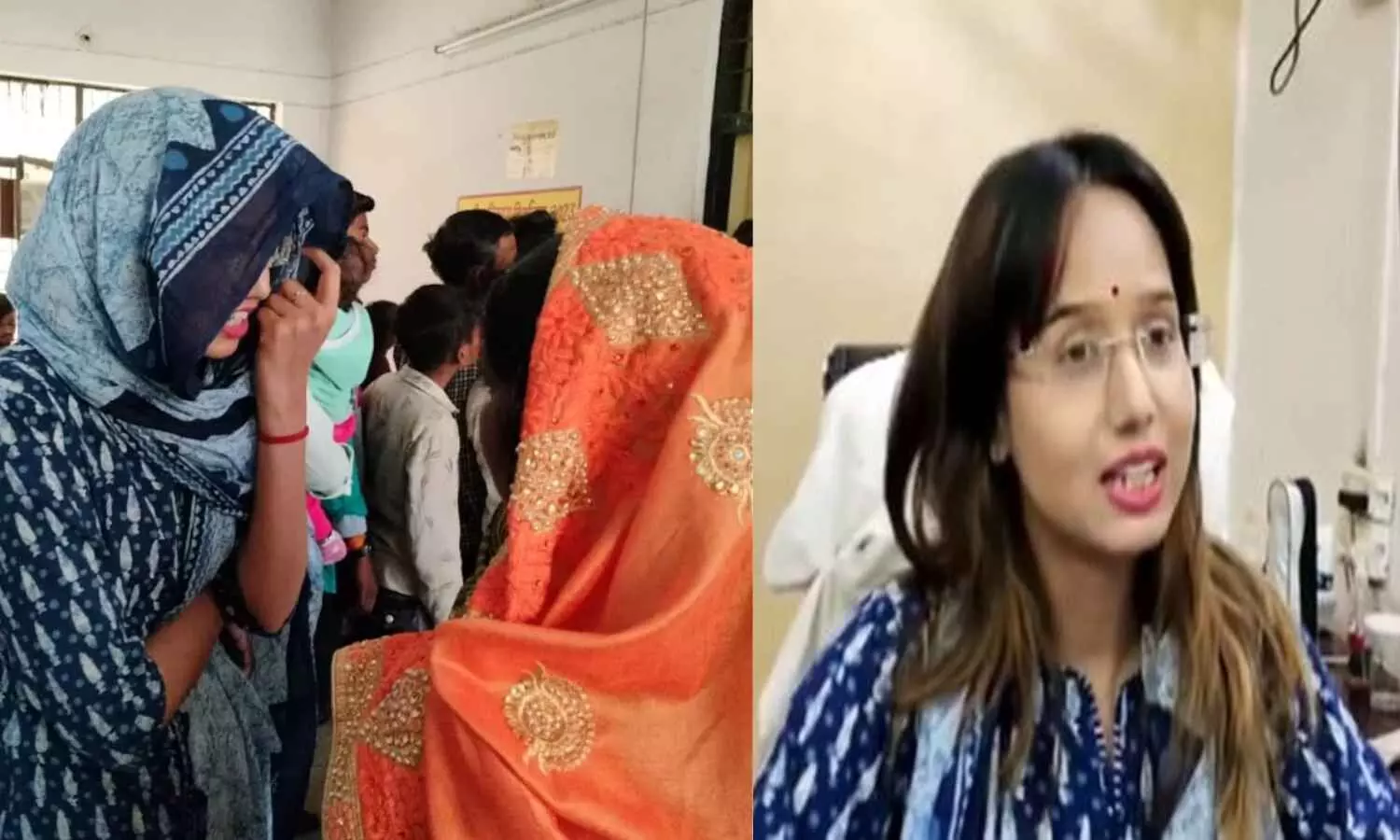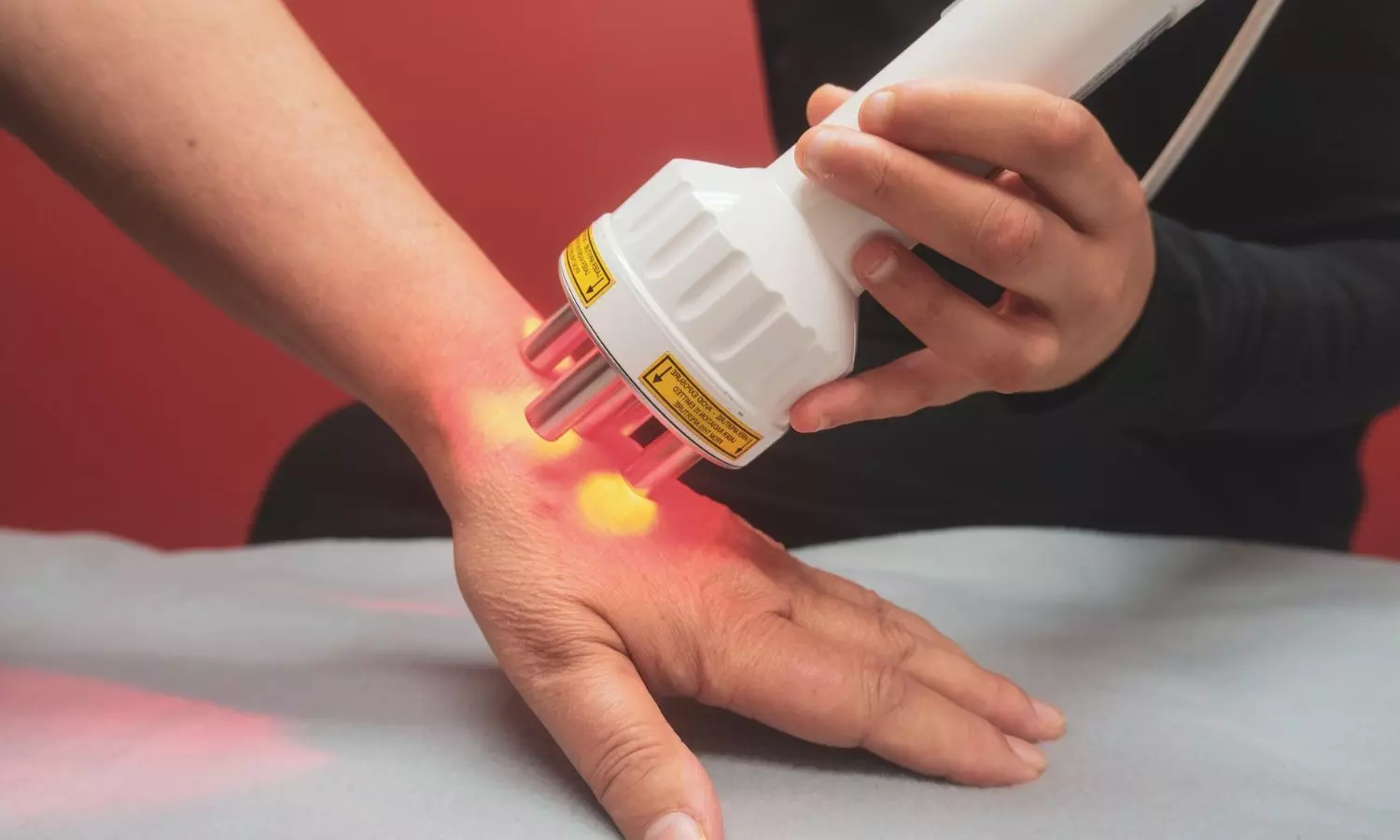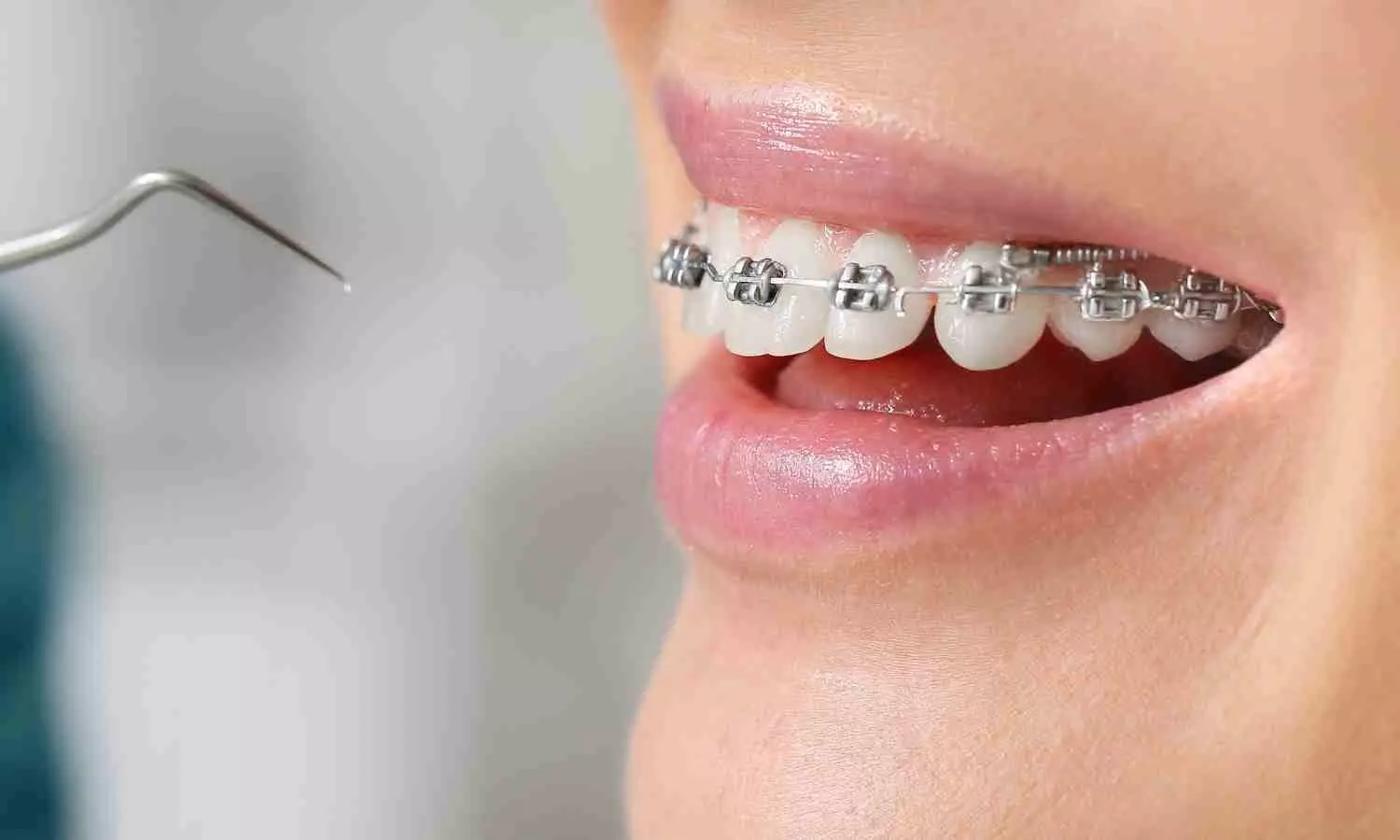Sleep expert says daylight saving time comes at a cost to your health
Powered by WPeMatico
Powered by WPeMatico

Ahmedabad: Zydus Lifesciences Limited has announced that the Company has received tentative approval from the United States Food and Drug Administration (USFDA) to manufacture and market Edaravone Injection, 30 mg/100 mL (0.3 mg/mL),
Single-Dose Vial, (RLD: RADICAVA).
Edaravone is used to treat a certain type of nerve disease called amyotrophic lateral
sclerosis (ALS, also commonly called Lou Gehrig’s disease).
Amyotrophic lateral sclerosis (ALS) is a rare and terminal neurodegenerative disease that results in the progressive loss of motor neurons. Motor neurons control voluntary muscles. ALS is the most common form of the motor neuron diseases. Early symptoms of ALS include muscle twitches, stiff muscles, muscle wasting, and gradual increasing weakness.
The drug will be manufactured
at the group’s injectable manufacturing facility at Jarod, near Vadodara (India).
Edaravone Injection, 30 mg/100 mL (0.3 mg/mL), had annual sales of USD 19 mn. in the
United States (IQVIA MAT Jan-24).
The group now has 390 approvals and has so far filed over 460* ANDAs since the
commencement of the filing process in FY 2003-04.
Medical Dialogues team had earlier reported that Zydus had received permission from CDSCO, India, to initiate the Phase II clinical study of NLRP3 inhibitor “ZYIL1” in patients with Amyotrophic Lateral Sclerosis (ALS).
Headquartered in Ahmedabad, Zydus Lifesciences Limited is an innovative, global lifesciences company that discovers, develops, manufactures, and markets a broad range of healthcare therapies. The group has a significant presence in cancer related therapies and offers a wide range of solutions with cytotoxic, supportive & targeted drugs. The group employs over 26,000 people worldwide, including 1,400 scientists engaged in R & D.
Powered by WPeMatico

Firozabad: In a move aimed at addressing the grievances of the public, an Indian Administrative Service (IAS) officer conducted a surprise inspection at a government health centre in Firozabad, Uttar Pradesh.
Donning a veil and posing as a patient, the officer, identified as Kriti Raj, Sub-Divisional Magistrate (SDM) of the area inspected the operations of the health facility.
“I had received a complaint in regards to Dida Mai health centre that the doctor was not present even after 10 am to administer an injection for a dog bite,” Kriti Raj posted as the Sub-Divisional Magistrate (SDM) in the area said, reports ANI.
“I went there anonymously in a veil. I sought an appointment and spoke with the doctor. The doctor’s behaviour was not appropriate,” she said.
The inspection unearthed various discrepancies, including staff absenteeism, expired medication stocks, and substandard hygiene practices. “When I checked their attendance register, I noted that some of them were absent. Moreover, around half of the stock of their medicines were found to be expired when we checked them,” Raj remarked.
Highlighting the deteriorating quality of service, Raj lamented, “Even injections were not being given properly. The staff were not working with the motive to serve people.”
The SDM emphasized the importance of addressing these issues promptly. “We have taken note of all these and we will investigate,” Raj affirmed, signaling impending action against the health centre officials.
Visuals from the inspection depicted SDM Kriti Raj mingling with other patients at the hospital, diligently scrutinizing medication stocks, and assessing the overall functioning of the facility.
The proactive approach adopted by Kriti Raj underscores the commitment of administrative authorities to ensure the efficient delivery of public services. Such initiatives not only address immediate concerns but also contribute to the long-term enhancement of healthcare infrastructure and service quality in the region.
Powered by WPeMatico

The paper is seen in the American Journal of Biopharmacy and
Pharmatceutical Sciences published by Scientific Scholar
A focused and extremely specific treatments for a wide range
of ailments, including cancer, autoimmune disorders, and infectious diseases,
immunotherapeutics based on antibody and hybridoma technologies have completely
changed the practice of medicine.
By harnessing the
immune system’s strength and fusing it with cutting-edge biotechnology, this
method creates monoclonal antibodies (mAbs), which are therapeutic agents that
mAbs are molecules created in a laboratory that resembles the immune system’s
naturally occurring antibodies.
This research offers a thorough analysis of
immunotherapeutics with a focus on hybridomas. It describes how focused and
precise treatments for a variety of illnesses, such as cancer, autoimmune
disorders, and infectious diseases, have been made possible by
immunotherapeutics, which are based on antibody and hybridoma technology.
The hybridoma technology process, is a heterogeneous
population of cells that produce unique mAbs are created by combining
immortalized myeloma cells with B lymphocytes. To isolate and create drug
formulations, the hybridoma cells that produce the desired antibodies are
chosen and grown in large numbers.
Hybridoma technology is used in treatment of autoimmune
conditions, viral infections and cancer. The importance of immunotherapeutics
based on antibody and hybridoma technologies is revolutionizing the treatment
environment and creating new opportunities for customized and targeted
therapies.
Powered by WPeMatico

Intravenous iodinated contrast media (ICM) in cirrhosis patients may cause nephrotoxicity, but research is limited and based on small, heterogeneous studies.
Powered by WPeMatico

Tea consumption might be closely related to non-malignant digestive diseases including gastroesphageal reflux disease.Nevertheless, this correlation remains inadequately comprehended.
Gastroesophageal reflux disease (GERD) is one of the most common digestive system diseases, which is associated with lifestyle and dietary factors. The main mechanism involved in GERD is affected by demographics, lifestyles, and dietary factors.
Previous studies have mentioned that tea consumption may be associated with symptoms like heartburn and reflux. Some studies have reported its association with GERD. More data is needed to clarify this association.
Powered by WPeMatico

USA: A recent medical education article published in the Journal of the American Academy of Dermatology reviews the various clinical applications of photobiomodulation (PBM) in dermatology. It details the recommended treatment regimen and evidence for PBM use in each of these conditions.
The researchers found that photobiomodulation is a safe and noninvasive treatment option for several conditions in dermatology. However, they stress that further research is needed to standardize PBM parameters.
The article stated, “The dermatologic conditions that can be treated with PBM include those secondary to cancer therapies (mucositis, acute radiation dermatitis, and lymphedema), ulcers, alopecia, acne, herpes simplex virus infection, skin rejuvenation, scars, and wounds.”
Photobiomodulation is an emerging treatment modality in dermatology with increasing home-based and office use. PBM is the use of various light sources in the red light (620-700 nm) and near-infrared (700-1440 nm) spectrum as a form of light therapy. It is often administered through light-emitting diodes or low-level lasers.
Studies show the effectiveness of PBM in treating conditions secondary to cancer therapies, ulcers, alopecia, acne, herpes simplex virus, skin rejuvenation, scars, and wounds.
“PBM offers patients many benefits compared to other treatments. It is cost-effective, noninvasive, convenient for patients, and offers a favorable safety profile,” reported Jared Jagdeo, Department of Dermatology, State University of New York, Downstate Health Sciences University, Brooklyn, New York, and colleagues.
According to Dr. Jagdeo and the team, PBM can be used as an alternative or adjuvant to other treatment modalities, including pharmacotherapy. They state that it is important for dermatologists to gain a better clinical understanding of PBM for in-office administration and to counsel patients on proper application for home-use devices to best manage safety and expectations as this technology develops.
PBM wavelengths can induce varied biological effects in diverse skin types, ethnicities, and races; therefore the researchers stress that it is also important for dermatologists to properly counsel their skin of color patients who undergo PBM treatments.
In conclusion, PBM may offer safe and effective treatment for several skin conditions, and parameters should be tailored to patients’ specific needs and disease severity.
PBM offers many benefits, including safety, minimal invasiveness, convenience, affordability, and accessibility.
“Future clinical trials are necessary to produce standardized recommendations across conditions and skin types,” the researchers wrote.
Reference:
Mineroff, J., Maghfour, J., Ozog, D. M., Lim, H. W., Kohli, I., & Jagdeo, J. (2024). Photobiomodulation CME part II: Clinical applications in dermatology. Journal of the American Academy of Dermatology. https://doi.org/10.1016/j.jaad.2023.10.074
Powered by WPeMatico

A high impact study led by Daniel Spratt, M.D., Vincent K. Smith Chair in Radiation Oncology at University Hospitals Seidman Cancer Center demonstrates the safety and efficacy of a novel oral hormone therapy, relugolix, in conjunction with radiation therapy for treating men with localized and advanced prostate cancer. This work is published in JAMA Oncology.
This research, encompassing an individual patient level analysis from two multinational randomized clinical trials, showcases relugolix’s ability to rapidly achieve and maintain low testosterone levels, a necessary condition for some men’s prostate cancer treatment, in both short-term (24 weeks) and longer-term (48 weeks) therapy periods. A total of 260 men participated in these studies and received the hormone therapy with radiotherapy, showing significant castration rates with relugolix of 95% and 97% for short-term and longer-term therapy, respectively.
“Remarkably, Relugolix demonstrated a faster return to baseline testosterone levels compared to traditional therapies, a crucial aspect for patients’ quality of life post-treatment. This rapid recovery could significantly reduce the adverse impacts associated with long-term testosterone suppression, such as cardiovascular risks and bone density reduction”, said Dr. Spratt.
For the first time, Dr. Spratt and colleagues demonstrated that there was no difference between leuprolide, an LHRH agonist, and relugolix in time to castration resistant-prostate cancer, a near uniformly lethal form of the disease.
Furthermore, the safety profile of relugolix was commendably consistent, with only a minor percentage of participants experiencing severe adverse effects. This positions relugolix as a potentially safer alternative to existing therapies, particularly for patients with pre-existing cardiovascular conditions.
The study’s findings further support the safety and efficacy of relugolix when combined with radiation therapy, and given the often finite durations of hormone therapy used with radiation therapy, relugolix is a very attractive treatment option for these men. Dr. Spratt’s research not only underscores the importance of advancing combinatorial therapeutic approaches to managing prostate cancer, but also highlights the potential of oral therapies in oncology.
Dr. Spratt is also the national PI of the open OPTYX prospective study that is evaluating the real-world practice patterns and outcomes of Relugolix in men with prostate cancer, and has accrued over 600 of the anticipated 1000 men.
Reference:
Spratt DE, George DJ, Shore ND, et al. Efficacy and Safety of Radiotherapy Plus Relugolix in Men With Localized or Advanced Prostate Cancer. JAMA Oncol. Published online March 07, 2024. doi:10.1001/jamaoncol.2023.7279.
Powered by WPeMatico

A new tool being developed by the University of Copenhagen and 3Shape will help orthodontists correctly fit braces onto teeth. Using artificial intelligence and virtual patients, the tool predicts how teeth will move, so as to ensure that braces are neither too loose nor too tight.
Many of us remember the feeling of having our braces regularly adjusted and retightened at the orthodontist’s office. And every year, about 30 percent of Danish youth up to the age of 15 wear braces to align crooked teeth. Orthodontists use the knowledge gained from their educations and experience to perform their jobs, but without the possibilities that a computer can provide for predicting final results.
A new tool, developed in a collaboration between the University of Copenhagen’s Department of Computer Science and the company 3Shape, makes it possible to simulate how braces should fit to give the best result without too many unnecessary inconveniences.
The tool has been developed with the help of scanned imagery of teeth and bone structures from human jaws, which artificial intelligence then uses to predict how sets of braces should be designed to best straighten a patient’s teeth.
“Our simulation is able to let an orthodontist know where braces should and shouldn’t exert pressure to straighten teeth. Currently, these interventions are based entirely upon the discretion of orthodontists and involve a great deal of trial and error. This can lead to many adjustments and visits to the orthodontist’s office, which our simulation can help reduce in the long run,” says Professor Kenny Erleben, who heads IMAGE (Image Analysis, Computational Modelling and Geometry), a research section at UCPH’s Department of Computer Science.
It’s no wonder that it can be difficult to predict exactly how braces will move teeth, because teeth continue shifting slightly throughout a person’s life. And, these movements are very different from mouth to mouth.
“The fact that tooth movements vary from one patient to another makes it even more challenging to accurately predict how teeth will move for different people. Which is why we’ve developed a new tool and a dataset of different models to help overcome these challenges,” explains Torkan Gholamalizadeh, from 3Shape and a PhD from the Department of Computer Science.
As an alternative to the classic bracket and braces, a new generation of clear braces, known as aligners, has gained ground. Aligners are designed as a transparent plastic cast of the teeth that patients fit over their teeth.
Patients must wear aligners for at least 22 hours a day and they need to be swapped for new and tighter sets every two weeks. Because aligners are made of plastic, a person’s teeth also change the contours of the aligner itself, something that the new tool also takes into account.
“As transparent aligners are softer than metal braces, calculating how much force it takes to move the teeth becomes even more complicated. But it’s a factor that we’ve taught our model to take into account, so that one can predict tooth movements when using aligners as well,” says Torkan Gholamalizadeh.
Researchers created a computer model that creates accurate 3D simulations of an individual patient’s jaw, and which dentists and technicians can use to plan the best possible treatment.
To create these simulations, researchers mapped sets of human teeth using detailed CT scans of teeth and of the small, fine structures between the jawbone and the teeth known as peridontal ligaments – a kind of fiber-rich connective tissue that holds teeth firmly in the jaw.
This type of precise digital imitation is referred to as a digital twin – and in this context, the researchers built up a database of ‘digital dental patients’.
But they didn’t stop there. The researchers’ database also contains other digital patient types that could one day be of use elsewhere in the healthcare sector:
“Right now, we have a database of digital patients that, besides simulating aligner designs, can be used for hip implants, among other things. In the long run, this could make life easier for patients and save resources for society,” says Kenny Erleben.
The area of research that makes use of digital twins is relatively new and, for the time being, Professor Erleben’s database of virtual patients is a world leader. However, the database will need to get even bigger if digital twins are to really take root and have benefit the healthcare sector and society.
“More data will allow us to simulate treatments and adapt medical devices so as to more precisely target patients across entire populations,” says Professor Erleben.
Furthermore, the tool must clear various regulatory hurdles before it is rolled out for orthodontists. This is something that the researchers hope to see in the foreseeable future.
A digital twin is a virtual model that lives in the cloud, and is designed to accurately mirror a human being, physical object, system, or real-world process.
“The virtual model can answer what’s happening in the real world, and do so instantly. For example, one can ask what would happen if you pushed on one tooth and get answers with regards to where it would move and how it would affect other teeth. This can be done quickly, so that you know what’s happening. Today, weeks must pass before finding out whether a desired effect has been achieved,” says Professor Kenny Erleben.
Digital twins can be used to plan, design and optimize-and can therefore be used to operate companies, robots, factories and used much more in the energy, healthcare and other sectors.
One of the goals of working with digital twins at the Department of Computer Science is to be able to create simulations of populations, for example, in the healthcare sector. If working with a medical product, virtual people must be exposed to and tested for their reactions in various situations. A simulation provides a picture of what would happen to an individual-and finally, to an entire population.
Reference:
P. Xu, T. Gholamalizadeh, F. Moshfeghifar, S. Darkner and K. Erleben, “Deep-Learning-Based Segmentation of Individual Tooth and Bone With Periodontal Ligament Interface Details for Simulation Purposes,” in IEEE Access, vol. 11, pp. 102460-102470, 2023, doi: 10.1109/ACCESS.2023.3317512.
Powered by WPeMatico

A new study discovered that the high-dose quadrivalent influenza vaccine (QIV-HD) outperforms the standard-dose version (QIV-SD) in preventing recurrent hospitalizations among older adults of 65 to 79 years. The findings were published in the Clinical Microbiology and Infection.
This post-hoc analysis of an open-label, randomized trial enrolled a total of 12,477 participants from October to November of 2021 and followed them until May 31, 2022. The participants were randomly assigned to receive either QIV-HD or QIV-SD. The outcomes were monitored 14 days after vaccination and focused on various outcomes, including hospitalizations for pneumonia or influenza, respiratory and cardio-respiratory hospitalizations, cardiovascular hospitalizations, all-cause hospitalizations and all-cause mortality.
The results from this study revealed a significant association between QIV-HD and lower incidence rates of hospitalizations for pneumonia or influenza (10 vs. 33 events) and all-cause hospitalizations (647 vs. 742 events) when compared to QIV-SD. Also, the benefits of QIV-HD were consistently observed over time even before the onset of active influenza transmission.
The data showed that the first significant reduction in hospitalizations for pneumonia or influenza occurred by calendar week 3 of 2022, while the influenza test positivity rate reached over 10% only in calendar week 10 of 2022. This indicates that the effectiveness of QIV-HD extends beyond the active influenza circulation which suggests a broader protective effect. This post-hoc analysis indicates that QIV-HD may offer a more active defense against recurrent hospitalizations than QIV-SD, with trends favoring the high-dose vaccine evident independently of influenza circulation levels.
Source:
Johansen, N. D., Modin, D., Skaarup, K. G., Nealon, J., Samson, S., Dufournet, M., Loiacono, M. M., Harris, R. C., Larsen, C. S., Reimer Jensen, A. M., Landler, N. E., Claggett, B. L., Solomon, P. S. D., Landray, P. M. J., Gislason, P. G. H., Køber, P. L., Stæhr Jensen, P. J. U., Sivapalan, P., Vestergaard, L. S., … Biering-Sørensen, P. T. (2024). Effectiveness of high-dose vs. standard-dose quadrivalent influenza vaccine against recurrent hospitalisations and mortality in relation to influenza circulation: a post-hoc analysis of the DANFLU-1 randomised clinical trial. In Clinical Microbiology and Infection. Elsevier BV. https://doi.org/10.1016/j.cmi.2024.01.017
Powered by WPeMatico
